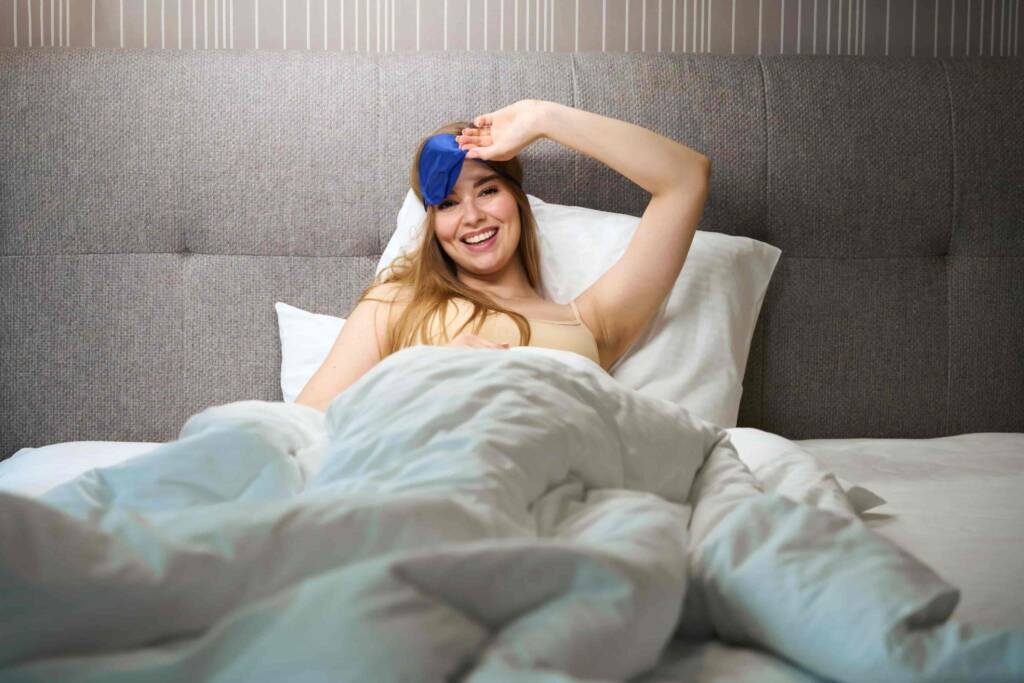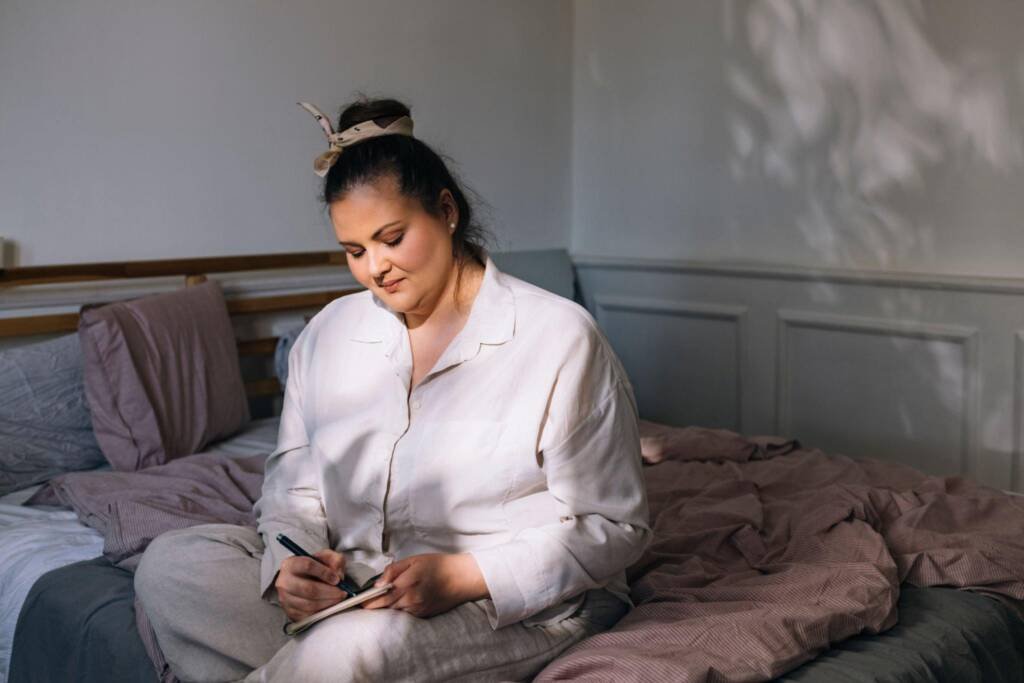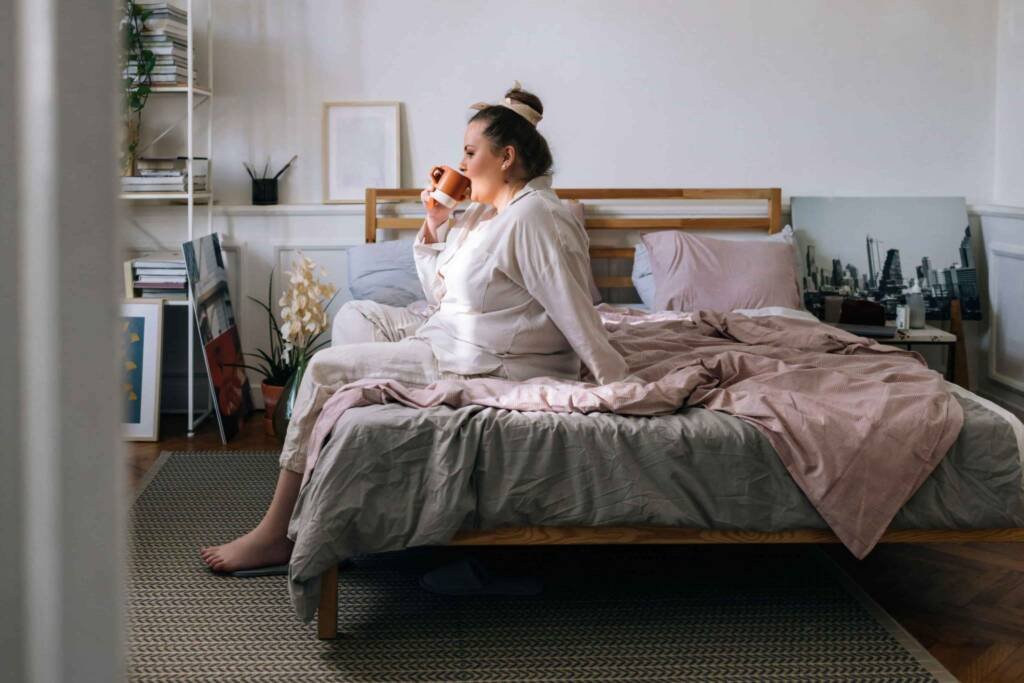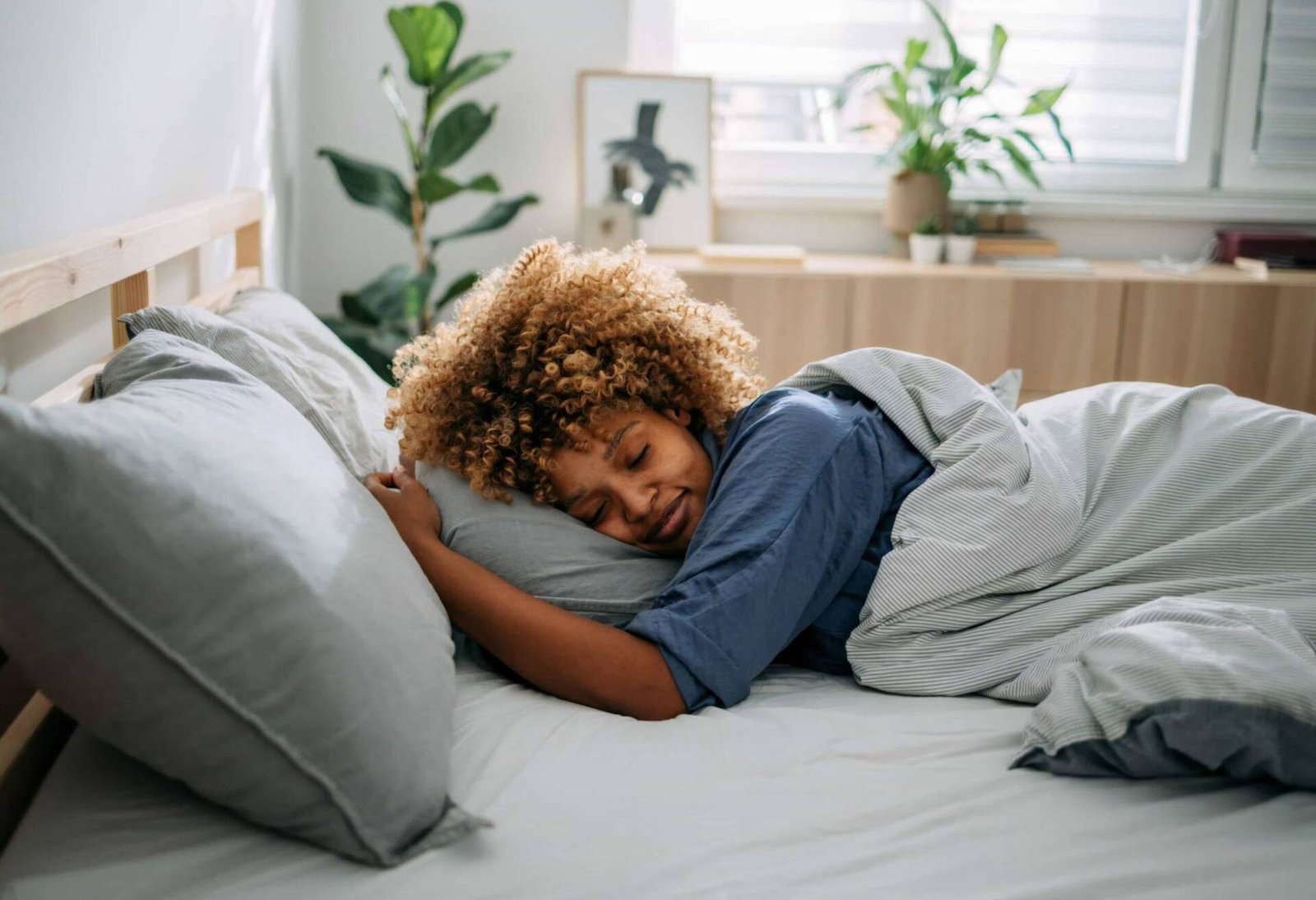In our fast-paced society, achieving quality sleep can often be elusive. Yet, sleep is vital for our overall health and well-being. This guide will explore ten proven methods to fall asleep faster, strategies that can help you transition from the buzz of the day to the peaceful slumber you desire. Whether creating the perfect sleep environment, incorporating relaxation techniques, or adjusting your diet, these methods are designed to help you attain restful, rejuvenating sleep more quickly.
Table of Contents
Sleep undeniably holds a significant role in maintaining optimal health and well-being. During sleep, the body conducts vital processes such as cell regeneration, memory consolidation, and regulation of emotions. On the other hand, lack of sufficient sleep can lead to weight gain, mood fluctuations, and a decrease in cognitive function, thus reinforcing the crucial role sleep plays in our overall health. Therefore, implementing strategies to ensure quality sleep is not just about feeling refreshed, but it’s also an investment in long-term health outcomes.
People face several common issues when trying to fall asleep quickly. These include stress and anxiety, which can make it challenging to quiet the mind and relax the body; over-stimulation due to electronics, such as bright screens and the constant flow of information; irregular sleep schedules, leading to a disrupted circadian rhythm; caffeine and alcohol intake close to bedtime, both of which can interfere with the body’s natural sleep processes; environmental factors, such as loud noises, bright lights, or uncomfortable temperatures; and physical discomfort or pain, which can make it hard to find a comfortable sleep position.
Understanding these issues is the first step towards developing effective strategies to overcome them.
Understanding Sleep.

The Sleep Cycle.
Sleep is not a single, uniform state but comprises several distinct stages forming a sleep cycle. These stages include Non-Rapid Eye Movement (NREM) sleep and Rapid Eye Movement (REM) sleep. A typical sleep cycle begins with three stages of NREM sleep, transitioning from light sleep (stage 1) to deep sleep (stage 3), followed by a period of REM sleep, the stage most associated with dreaming.
Throughout the night, we cycle through these stages multiple times. Each complete cycle typically lasts about 90-110 minutes. NREM sleep, profound sleep, is crucial for physical restoration and recovery, while REM sleep plays a significant role in memory consolidation and emotional processing. Understanding the sleep cycle is key to appreciating why quality sleep is as important as quantity.
Factors Affecting the Ease of Falling Asleep.

Numerous factors can affect how easily we fall asleep. These include biological elements, such as our internal body clock or circadian rhythm, which regulates our sleep-wake cycle and dictates when we feel sleepy or alert. Age also plays a role, with older adults typically experiencing more fragmented sleep and difficulty falling asleep than younger individuals.
Lifestyle factors are another significant influence. These include our sleep hygiene habits, such as keeping a consistent sleep schedule, ensuring a sleep-friendly environment, and avoiding stimulating activities close to bedtime. Diet can also affect our sleep. Consuming caffeine or alcohol, especially close to bedtime, can disrupt our sleep onset. Additionally, heavy, spicy, or high-sugar foods can cause discomfort and indigestion, making it harder to fall asleep.
Psychological factors, such as stress, anxiety, and depression, can significantly impact sleep. These conditions often generate a state of hyperarousal, making it challenging to relax and drift off to sleep.
Physical conditions, such as chronic pain or sleep disorders like insomnia or sleep apnea, can also affect the ease with which we fall asleep.
Understanding these factors provides a foundation for implementing strategies and interventions to promote faster and better sleep.
Proven Methods to Fall Asleep Faster:

Below are ten proven strategies that can help you fall asleep faster:
Method 1: Create a Sleep-Friendly Environment.

A conducive sleep environment is critical to falling asleep quickly. This means making your bedroom a sleep sanctuary. Firstly, ensure your bedroom is dark, as light can inhibit melatonin production, a hormone that regulates the sleep-wake cycle. Consider investing in blackout curtains and eye shades or using a sleep mask.
Secondly, keep the room temperature cool. A slightly cooler room supports the body’s natural temperature dip during sleep. Around 60-67 degrees Fahrenheit (15-19 degrees Celsius) is generally recommended.
Thirdly, ensure your room is quiet. Noise can significantly disrupt sleep. Consider using earplugs, a fan, or a white noise machine to block out disturbing sounds. Lastly, invest in a good quality mattress and pillows. Your bed should be comfortable and supportive to help prevent back pain and other issues inhibiting sleep.
Incorporating these changes can significantly enhance your sleep environment and make it easier to fall asleep quickly and stay asleep throughout the night.
Method 2: Establish a Consistent Sleep Schedule.

Sticking to a regular sleep schedule has manifold benefits. Firstly, it helps regulate your body’s internal clock, also known as the circadian rhythm. This enhanced regulation aids in promoting higher-quality sleep.
Secondly, maintaining a consistent sleep schedule can help you fall asleep and wake up more easily. Over time, your body will begin to naturally feel tired at your designated bedtime and wake up more quickly at the set time.
Thirdly, consistency can significantly improve your sleep duration, ensuring you get adequate rest. Lastly, a regular sleep schedule can also positively affect your overall health. It can boost your immune system, improve your mood, enhance your memory and cognitive functions, and even help manage weight.
Thus, establishing a consistent sleep schedule is a simple yet potent strategy to improve sleep quality and general well-being.
Tips for Developing a Regular Sleep Schedule:
Implementing a regular sleep schedule may seem daunting initially, but a few simple strategies can make this task more manageable.
1. Gradual Adjustment: If your current sleep schedule varies significantly from your desired timing, making gradual adjustments is beneficial. Shifting your sleep schedule abruptly by an hour or more can cause a feeling of jet lag. Instead, adjust by 15-30 minutes every few days until you reach your target schedule.
2. Set Fixed Bedtime and Wake-up Time: Consistency is the key. Determine your target bedtime and wake-up time and stick to them as closely as possible, even on weekends. This consistency helps reinforce your body’s sleep-wake cycle.
3. Establish a Bedtime Routine: A relaxing routine before bed can signal to your body that it’s time to wind down and get ready for sleep. This routine might include reading, taking a warm bath, or meditating.
4. Limit Long Daytime Naps: Long or irregular napping during the day can disrupt your sleep schedule. If you must nap, limit yourself to 20-30 minutes and make it during the midafternoon.
5. Avoid Stimulants Near Bedtime: Avoid food and drinks that contain caffeine or alcohol for at least 3 hours before your planned bedtime. These substances can interfere with your ability to fall asleep.
6. Use Light to Your Advantage: Natural light keeps your internal clock on a healthy sleep-wake cycle. Therefore, let in as much natural light as possible during the day and reduce light exposure in the evening.
By consistently practicing these tips, you can successfully establish a regular sleep schedule, leading to better sleep quality and overall health.
Method 3: Limit Exposure to Screens Before Bed.

Blue light emitted from screens significantly impacts sleep by interfering with the body’s natural sleep-wake cycle, also known as the circadian rhythm. Our bodies follow this rhythm to determine when to sleep and when to wake up.
During the day, exposure to natural light, including the blue light part of the spectrum, keeps us alert and awake. But excessive exposure to artificial blue light from screens in the evening tricks our brain into thinking it’s still daytime, which hinders the production of melatonin, the hormone responsible for inducing sleep. The reduction in melatonin makes it harder to fall and stay asleep.
Additionally, the stimulating effects of blue light can boost alertness, making it more difficult to wind down and relax for sleep. Therefore, limiting exposure to screens, especially before bedtime, is crucial to ensuring a good night’s sleep.
Suggestions for Reducing Screen Time in the Evening
Reducing screen time in the evening can be challenging, especially in our digitally connected world, but it’s essential for a good night’s sleep. Here are some practical suggestions:
1. Establish Screen-Free Time: Designate an hour before bed as screen-free. Use this time to engage in relaxing activities such as reading a book, meditating, or practicing gentle yoga.
2. Use an Alarm Clock: Instead of using your phone as an alarm, consider using a traditional alarm clock. This strategy can help you resist the temptation to check your phone right before bed and first thing in the morning.
3. Adjust Your Environment: Keep televisions, computers, and other gadgets out of the bedroom. This helps reinforce the mental association between your bedroom and sleep.
4. Utilize Technology: If you must use screens in the evening, consider investing in blue-light-blocking glasses or installing apps that filter the blue light emitted by the device screen.
5. Set Boundaries: Establish a cut-off time for work emails and social media. Often, the habit of checking work emails and social media can lead to unnecessary screen time.
Implementing these suggestions can help you reduce screen time in the evening, paving the way for better sleep.
Method 4: Avoid Stimulants Close to Bedtime.

Stimulants such as caffeine and alcohol substantially impact the quality and quantity of sleep. Caffeine is a central nervous system stimulant that can delay the timing of your body clock, reduce the total amount of sleep you obtain, and also affect the stages of sleep, significantly reducing the amount of restful, deep sleep you experience. It can take up to six hours for half of the caffeine to be eliminated from your body, which means consuming it later in the day can significantly impact your night’s sleep.
Alcohol, while initially acting as a sedative, can lead to sleep disturbances later in the night. It can prevent you from reaching the deeper, more restorative stages of sleep, causing you to wake up still feeling tired despite a whole night’s sleep.
Additionally, alcohol can exacerbate breathing problems during sleep, including snoring and sleep apnea. So, while alcohol might help you fall asleep faster, it ultimately significantly decreases the quality of your sleep.
Therefore, it’s recommended to avoid these stimulants for at least 3 hours before your planned bedtime to ensure a good night’s sleep.
Method 5: Opt for Sleep-Promoting Foods and Drinks.

Certain foods and drinks can significantly influence the quality and duration of our sleep, serving as natural aids to promote a good night’s rest. Tryptophan, an amino acid found in many protein-rich foods, helps the body produce serotonin. This neurotransmitter calms the brain and plays a crucial role in maintaining the sleep-wake cycle. Complex carbohydrates can enhance the availability of tryptophan in the bloodstream, further promoting sleep.
Foods containing magnesium and calcium also contribute to sleep, as these minerals produce melatonin, the hormone regulating sleep.
On the other hand, spicy or fatty foods, heavy meals close to bedtime, and foods high in sugar can disrupt sleep by causing discomfort and reducing the time spent in the restorative stages of sleep. Therefore, a well-balanced diet with sleep-promoting foods can significantly improve sleep quality and duration.
Certain foods and drinks can aid in promoting better sleep. Here are some suggestions:
1. Cherries: Cherries are a natural source of melatonin, which can help regulate sleep. Tart cherries or tart cherry juice may be particularly beneficial.
2. Almonds and Walnuts: These nuts contain high magnesium levels, a mineral linked with better sleep quality. Walnuts also have a small amount of tryptophan, a sleep-enhancing amino acid.
3. Warm Milk: A traditional sleep remedy, warm milk contains tryptophan and calcium, which can promote sleep. However, the effectiveness of this remedy is believed to be more psychological than physiological.
4. Herbal Tea: Non-caffeinated herbal teas like chamomile, valerian root, and lavender are known for their calming properties and can be part of a relaxing bedtime routine.
5. Kiwi: Kiwis are rich in antioxidants and serotonin, which may improve sleep quality when eaten before bed.
6. Fatty Fish: Fatty fish, like salmon, tuna, and mackerel, are rich in vitamin D and omega-3 fatty acids, which may enhance sleep quality.
7. White Rice: High-glycemic-index (GI) foods like white rice may promote better sleep, especially when consumed more than an hour before bed.
8. Tart Cherry Juice: Tart cherry juice is high in melatonin, and drinking it can improve sleep duration and quality.
9. Turkey: Turkey is not only delicious but can also promote sleepiness due to its high tryptophan content.
Everyone is different, so what works for some may not work for others. It’s essential to pay attention to how your body reacts to these foods and adjust your diet accordingly.
Method 5: Practice Relaxation Techniques.

Relaxation techniques are practical tools to calm the mind and prepare the body for sleep. Deep breathing, progressive muscle relaxation, and visualization are particularly beneficial.
Deep Breathing: This technique involves taking slow, deep, and deliberate breaths. Deep breathing can help reduce stress and anxiety, lower your heart rate, and signal to your body that it’s time to relax and unwind, creating an ideal state for falling asleep.
Progressive Muscle Relaxation: Progressive muscle relaxation is a method where you tense and then release different muscle groups in the body, starting from the toes and working your way up to the head. It promotes a sense of bodily relaxation, reduces insomnia symptoms, and contributes to deeper, more restful sleep.
Visualization: Visualization, or guided imagery, involves picturing a calming or peaceful scene to help you relax. Focusing your mind on positive, soothing images distracts from any stress or anxiety, promoting a state of relaxation conducive to sleep. Visualization not only helps in falling asleep faster but also improves the quality of sleep.
Incorporating these relaxation techniques into your bedtime routine can significantly improve sleep quality and overall well-being.
Method 6: Try a Sleep Aid.
Sleep aids can provide a helpful boost for those struggling to establish regular sleep patterns. They come in various forms, from over-the-counter supplements to prescription medications. It is essential to recognize that these aids are typically designed for short-term use and must be used under the guidance of a healthcare professional.
Melatonin Supplements: Melatonin is a hormone naturally produced by the body that signals it’s time to sleep. Melatonin supplements can be used to adjust the body’s internal clock and are particularly helpful for those experiencing jet lag or working night shifts.
Valerian Root: Valerian is a herb that has been used for centuries to treat insomnia. It aids in falling asleep faster and improving the quality of sleep.
Prescription Sleep Medications: A healthcare professional may recommend prescription sleep medications for more severe sleep problems. These medications are powerful and can provide immediate relief, but they must be used under a doctor’s supervision due to their potential for side effects and dependency.
Antihistamines: Some over-the-counter sleep aids contain antihistamines, which can induce drowsiness. However, they should not be used for long periods as they may cause side effects like drowsiness and dry mouth.
Cautions and Considerations when Using Sleep Aids
While sleep aids can effectively combat sleep issues, they should be used with caution. Long-term reliance on sleep aids can potentially lead to dependency or an inability to sleep without them. In addition, they may have side effects, including daytime drowsiness, dizziness, and cognitive impairment. Over-the-counter sleep aids should not be mixed with alcohol or other medications without a doctor’s approval, as this could lead to harmful interactions.
Furthermore, sleep aids do not address the underlying causes of sleep issues. Thus, combining their use with behavioral changes and lifestyle modifications is crucial for a comprehensive approach to improving sleep quality. Lastly, always consult your healthcare professional before starting any new medication, including over-the-counter sleep aids.
Method 7: Regular Exercise.

Regular exercise can be a powerful tool for improving sleep quality and reducing the time it takes to fall asleep. A consistent fitness routine aids in regulating the body’s natural biological clock, known as the circadian rhythm, promoting healthier sleep and wake cycles.
Exercise also aids in reducing stress and anxiety, common culprits of sleep problems, by stimulating the release of endorphins, the body’s natural mood lifters; moreover, engaging in physical activity increases body temperature. The subsequent drop in body temperature post-workout can stimulate feelings of drowsiness, making falling asleep easier.
Exercising early in the day or at least a few hours before bedtime is recommended to provide the most benefits for sleep. However, individual responses to exercise can vary, and it’s essential to find a routine that fits into your lifestyle and aligns with your body’s unique needs.
Tips for Incorporating Exercise into Your Routine:
- Start Slowly: If you’re new to exercise, gradually increase your activity level. Start with a few minutes of daily activity, then gradually increase the duration and intensity as your stamina improves.
- Find an Activity You Enjoy: Exercise doesn’t have to be a chore. Whether it’s dancing, cycling, swimming, or yoga, choose an activity you love and look forward to.
- Schedule Your Workout: Just like any other necessary appointment, schedule your workouts in your calendar to ensure they’re a priority.
- Mix It Up: Variety in your workout routine can keep it interesting and help you stay motivated. Try different workouts to keep your body guessing and improve your overall fitness.
- Listen to Your Body: Rest is crucial for your body to recover and get stronger. Make sure to include rest days in your exercise routine and listen to your body’s signals if you need extra rest.
- Stay Hydrated and Eat Well: Proper nutrition and hydration can improve your performance and recovery. Ensure you eat a balanced diet and drink enough water before, during, and after your workouts.
- Get a Workout Buddy: Having a friend to exercise with can make your workout more enjoyable and help you stick to your routine. A workout buddy can provide motivation and support and make your fitness journey more fun.
- Set Realistic Goals: Setting achievable goals can help keep you motivated. Whether running a certain distance, lifting a certain weight, or simply feeling more energetic, having clear goals can guide your workout routine and provide a sense of accomplishment.
- Make it a Habit: Consistency is key when it comes to exercise. Make physical activity a regular part of your daily routine; it will become a habit over time.
Remember, it’s essential to consult with a healthcare professional before starting a new exercise routine, especially if you have any health concerns.
Method 9: Cognitive Behavioral Therapy for Insomnia (CBT-I).
Cognitive Behavioral Therapy for Insomnia (CBT-I) is a structured program that helps individuals identify and replace thoughts and behaviors contributing to their sleep issues. This therapy primarily focuses on the cognitive part, challenging and changing unhelpful beliefs and attitudes about sleep, and the behavioral aspect, promoting good sleep habits and avoiding behaviors that keep you awake. CBT-I aims to change the negative thought patterns and behaviors that prevent you from getting restful sleep.
It often involves regular, weekly sessions with a therapist skilled in CBT-I and implementing techniques designed to improve sleep hygiene, alter detrimental sleep habits, and reduce sleep-related anxiety and worry. CBT-I is considered a first-line treatment for chronic insomnia and is incredibly effective, often without sleep medications.
Finding a Licensed Practitioner or Online Program for CBT-I
To find a licensed practitioner or a reputable online program for Cognitive Behavioral Therapy for Insomnia (CBT-I), there are several routes you can take:
- Medical Networks and Organizations: Medical associations like the American Board of Sleep Medicine (ABSM) or the Society of Behavioral Sleep Medicine (SBSM) have databases or directories of licensed practitioners specializing in sleep disorders and treatments, including CBT-I.
- Healthcare Providers: Your primary healthcare provider or a sleep specialist can provide a trusted referral to a licensed CBT-I practitioner.
- Online CBT-I Programs: Numerous digital platforms offer CBT-I programs led by licensed therapists. Some well-regarded ones include Sleepio, SHUTi (Sleep Healthy Using The Internet), and CBT-I Coach. These platforms often involve a series of interactive sessions that guide you through the process of improving your sleep habits and addressing concerns related to sleep.
- Insurance Provider: Contact your insurance provider to ask about whether they cover CBT-I and if they can recommend a licensed practitioner or online program.
While searching, ensure that a recognized body accredits the practitioner or program you choose and that they have appropriate training and experience in CBT-I. Always consult with your primary healthcare provider before starting any new treatment or therapy.
Method 10: Consult a Healthcare Provider.

If your sleep difficulties persist for several weeks, interfere with your daily activities, or cause distress, it may be time to consult a healthcare provider. Specific signs that indicate the need to seek medical help include persistent insomnia, daytime sleepiness, snoring, pauses in breathing during sleep, prolonged difficulty falling asleep or staying asleep, frequent nighttime awakenings, or recurring nightmares.
Also, suppose you’ve tried various self-help strategies with little or no improvement. In that case, a healthcare provider can guide you to appropriate treatments, including lifestyle changes, medication, or referral to a sleep specialist. Remember, chronic sleep problems can indicate underlying health issues, such as sleep disorders, mental health problems, or other medical conditions.
During a professional consultation, your healthcare provider will extensively discuss your sleep history and comprehensively evaluate your sleep patterns and habits. This process likely involves filling out questionnaires and surveys about your sleep habits, sleep history, and overall health. The healthcare provider may carry out a physical exam to look for signs of medical conditions that can disrupt sleep.
They might also request a sleep diary, where you record details about your sleep for one to two weeks. Sometimes, you might be referred for sleep studies, such as a polysomnography or a home sleep apnea test.
The healthcare provider can provide a diagnosis and recommend appropriate treatment options based on the evaluation. Importantly, this consultation is an opportunity for you to ask questions and express any concerns about your sleep health.
Conclusion
In summary, we have explored a variety of strategies to improve sleep health. Regular physical activity can improve your physical health and promote better sleep. Cognitive Behavioral Therapy for Insomnia (CBT-I) is an evidence-based approach that helps change thought patterns and behaviors that prevent restful sleep. Resources for finding a licensed practitioner or online CBT-I program can be found through medical networks, your healthcare provider, online platforms, and insurance providers.
Finally, suppose sleep difficulties persist and interfere with your daily life. In that case, you must consult a healthcare provider who can guide you toward appropriate treatments, including lifestyle changes, medication, or referral to a sleep specialist. Remember, consistently poor sleep can be a sign of underlying health issues and should be addressed with the help of a professional.
Achieving quality sleep may seem a distant reality for those who struggle with sleep problems. However, remember that you are not alone, and numerous scientifically backed methods and treatments are available to aid you. The journey toward better sleep can take time and patience, but each small step brings you closer to your goal. It’s essential to stay positive and keep going even if some methods don’t work for you. Each person is unique, and what works for one might not work for another. Keep trying different approaches, and, most importantly, don’t hesitate to seek professional help if needed. You deserve a restful night’s sleep, and it’s entirely within your reach. Sleep well.






8 Comments